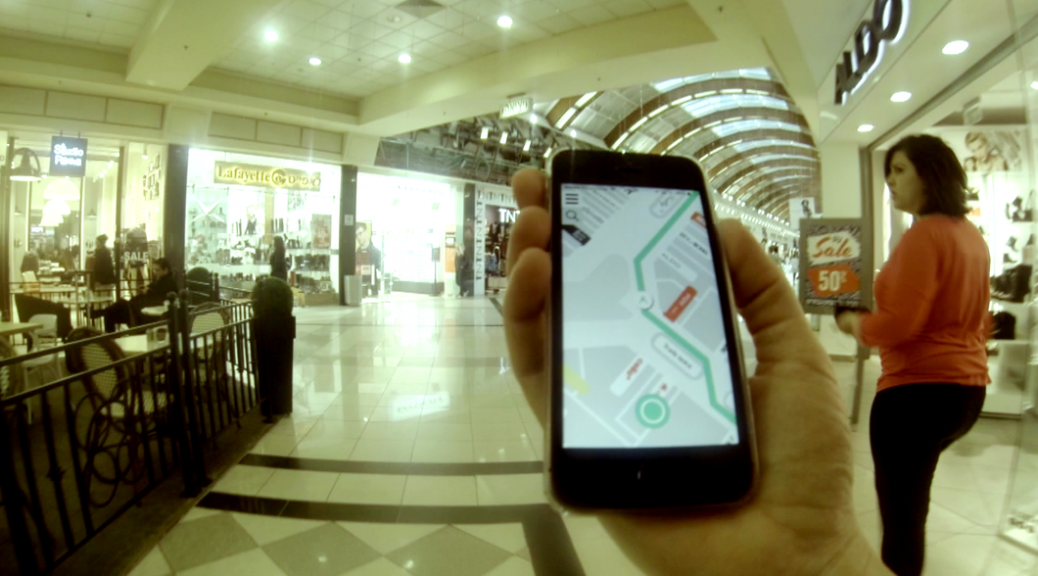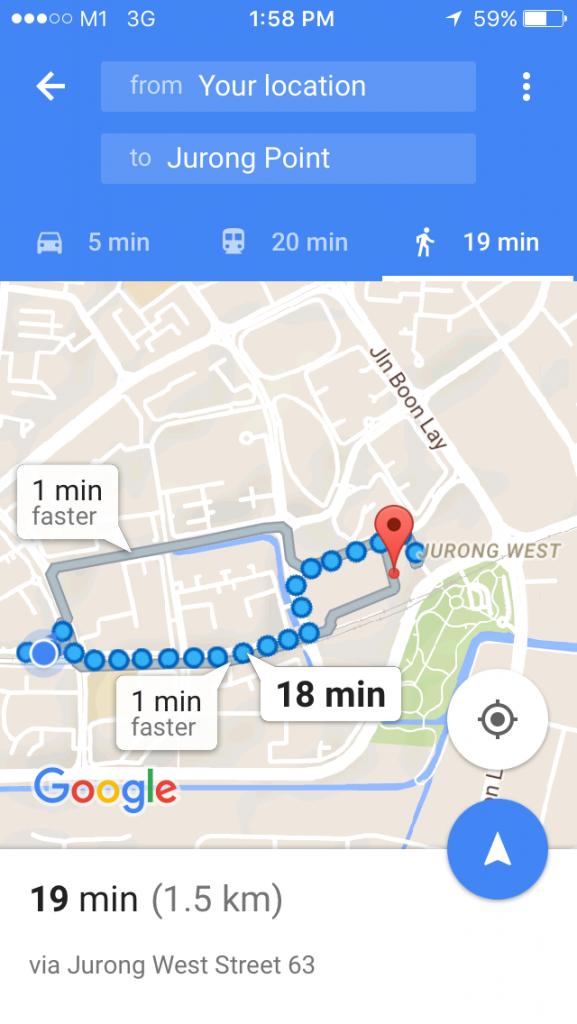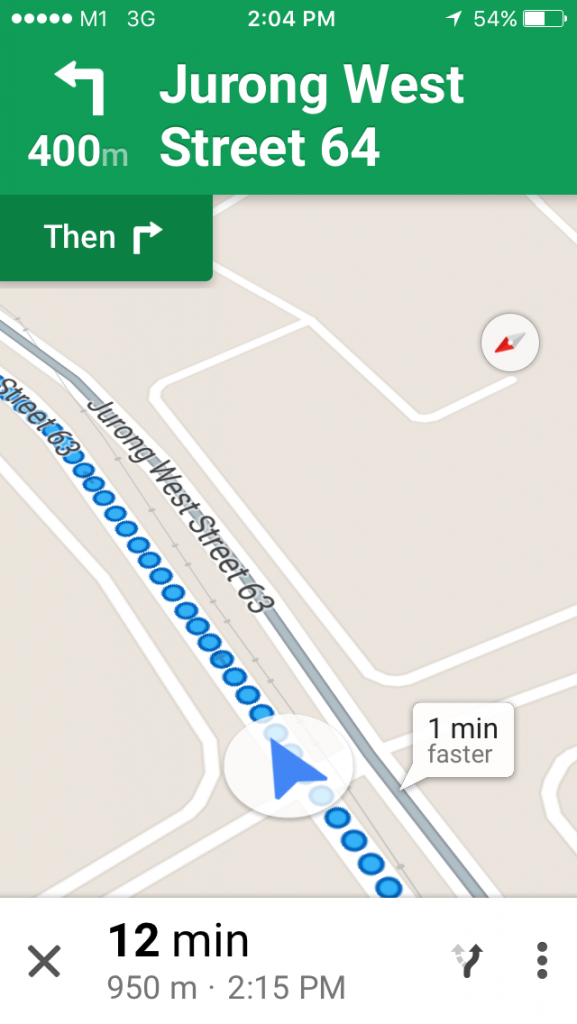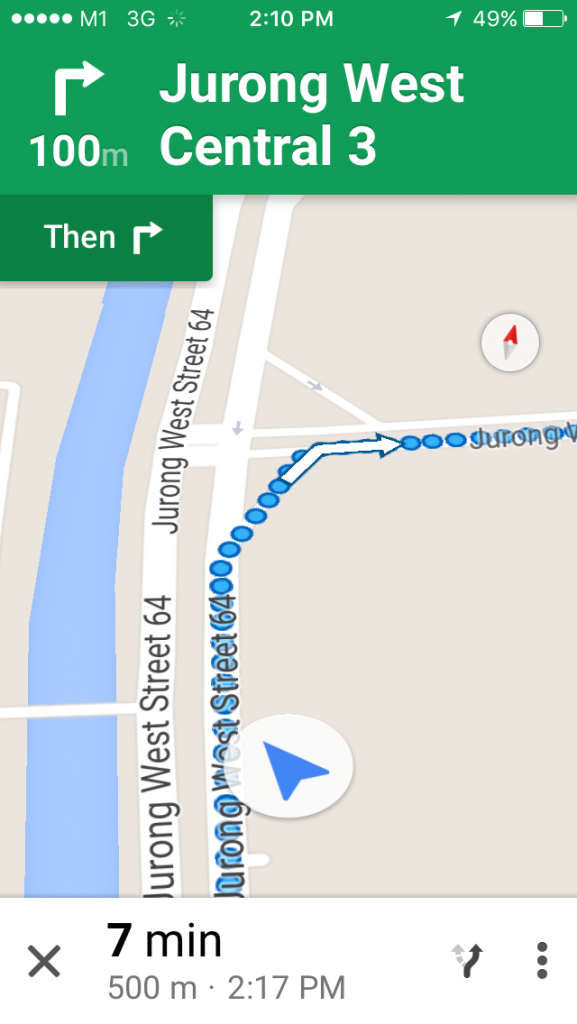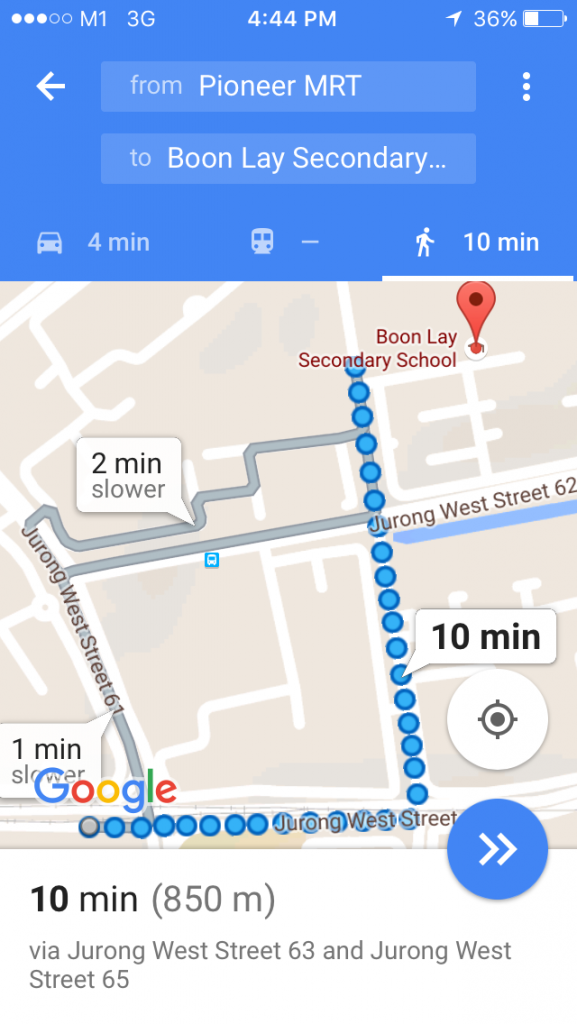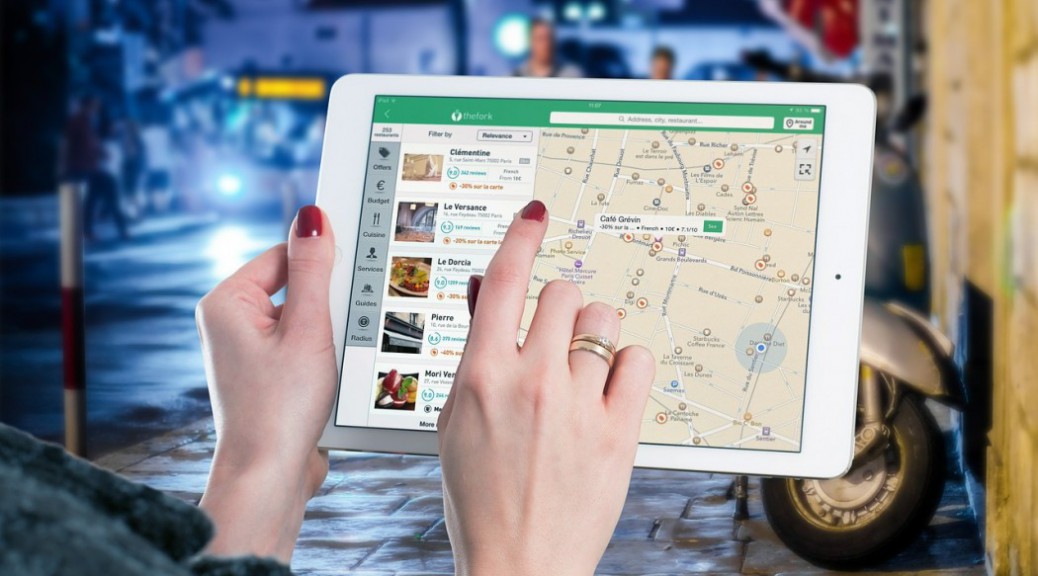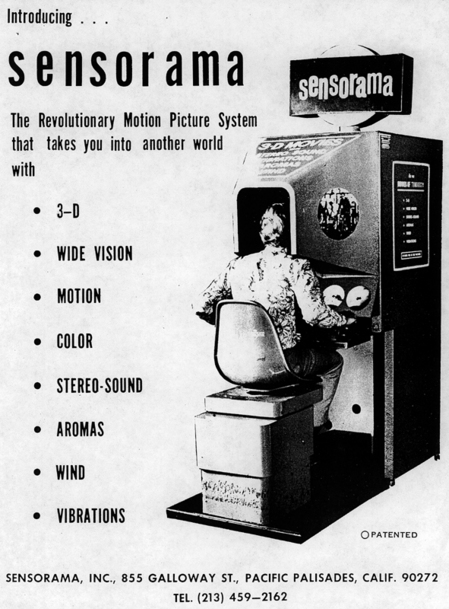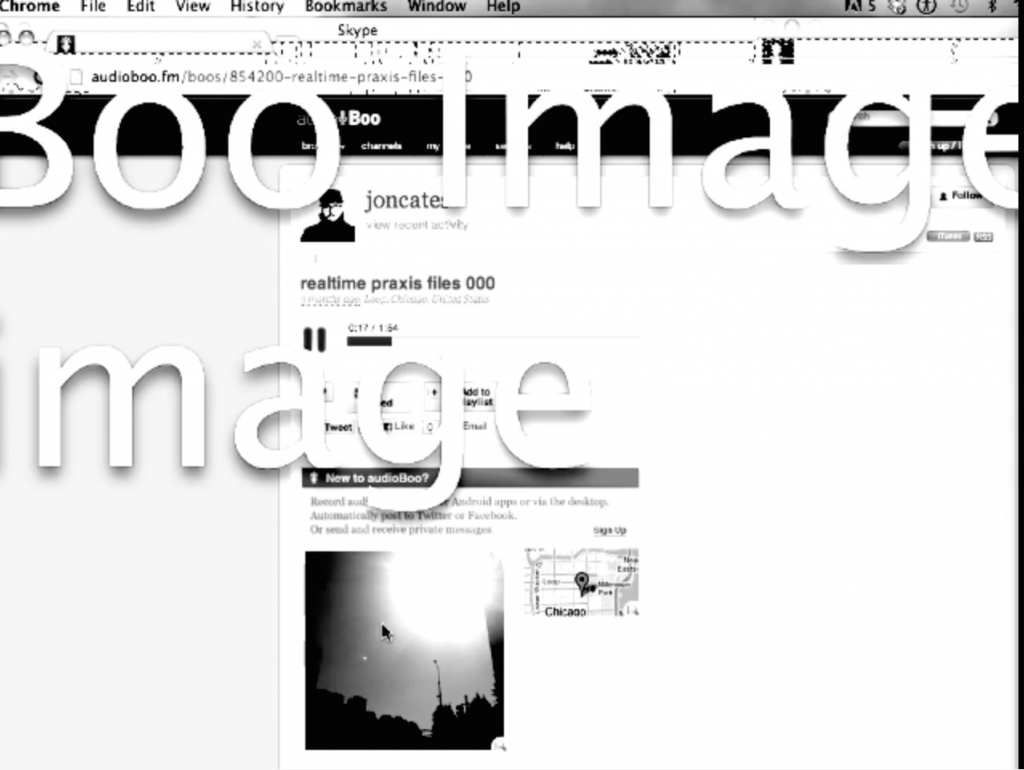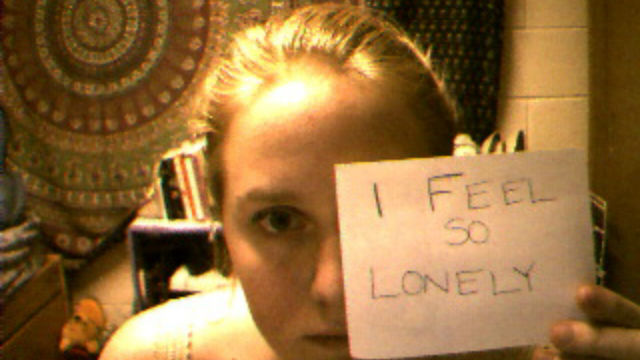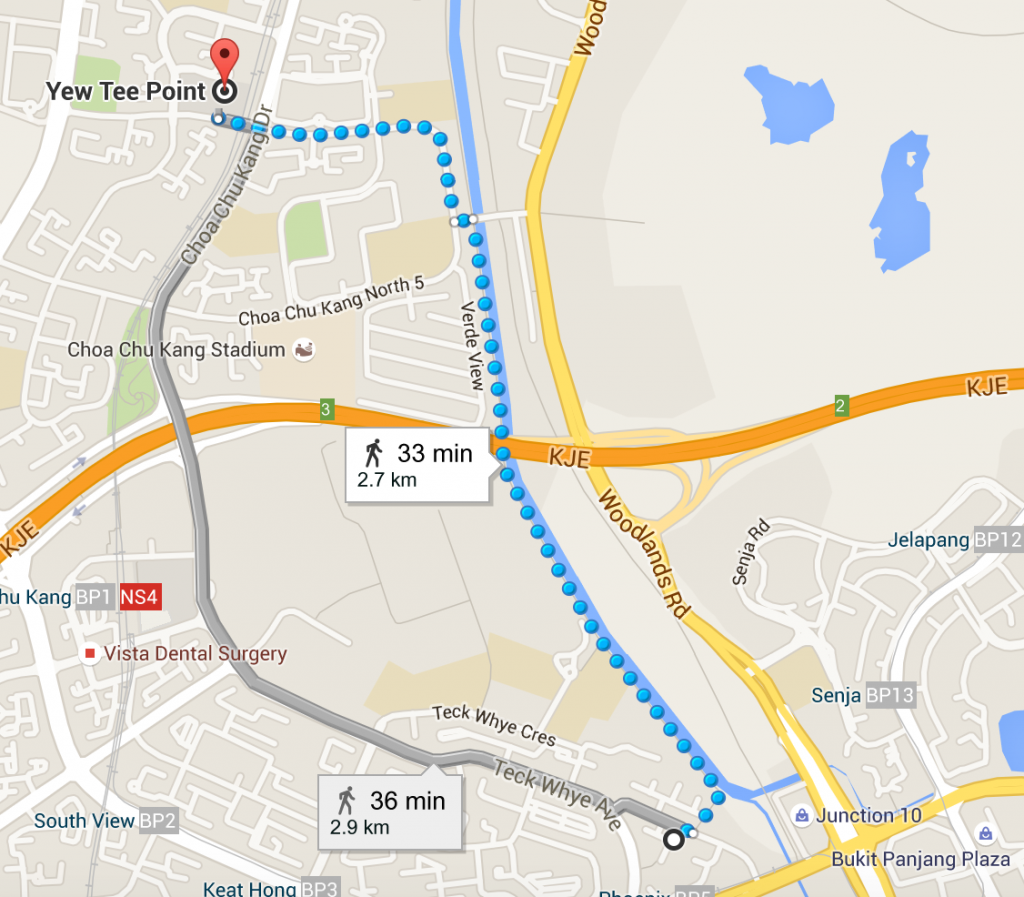So for this week, it was all about experimenting and trying to see how it flows.
The objective was to be able to consciousness focus on the google map to navigate myself to a destination without paying attention to my surroundings visually.
Previously, I had already experimented in school with regard to the way it was to be captured.
Initially, I planned to do it on Wednesday after getting all my equipment and testing them out. I planned to go from my house to Yew Tee Point, which I also proposed the last time. However, due to the rain, I had to postpone the whole experiment today.
I started from Pioneer Mrt Station and decided to navigate myself to Jurong Point. It was to take me approxmiately 20 to 30 minutes to reach there. Hence, I commenced with the journey, being very conscious mostly to focusing on the Google Map and not what’s infront of me visually.
I used a samsung phone to record my voice while using my iphone to navigate through to Jurong Point Mall. I took screenshots of the Google Map as I navigated to the Mall. Thus, I have used the voice recording together with the screenshots to create a short clip of my process. I could update the whole 21 mins recording due to space constrains.
The overall experience with having to navigate using Google Maps alone and trying to consciously focus on it visually can be both tiring and scary. I tend to lean on my sense of hearing for me to be cautious about my surroundings. When I am nearing a traffic light ( which I use Google Maps to detect when I have to cross a lane), I tend to automatically survey my surroundings immediately and to make sure that I am able to cross the street.
As a person who loves to talk, I found myself many times repeating my descriptions of the surrounding or my emotions. It got to a point where I just had to leave it silent. The recording became too mundane, in my opinion. I left it didn’t truly express me as I was a visual person.
Along the process, listening to my surroundings became extremely keen to accommodate my sense of security. The beginning stage, where the surrounding sounds just included children, buses etc, the sense of security was at bay. However, as mentioned in my recordings, it became worse as I approached the Mall. The sound was heavy, and had constant overlaps. This created discomfort in me. I was getting very frustrated and this overwhelming sense of discomfort that most probably I associated with danger. It was then, that I was more interested in ending the whole process. It was a sense of urgency and despair that filled me.
The idea of using the virtual realism to dominate my physical boundaries seemed possible when the environment was as peaceful as what it was in the google maps. However, when the scenario changes, there are certain natural instincts that I tended to express. I wouldn’t pin it down as a fight or a flight theory but it runs along those lines.
So what’s next? I analysed today’s project and realized that, as mentioned during last week’s critique, I needed to record myself in the process- which is essential. However, by planning the location and the route, I think I put myself on familiar grounds and hence was confident to do it. Such familiarity was strong that I didn’t have much to talk about or express my feelings.
Hence, the next recording I am intending to do is to walk from Pioneer Mrt to Boon Lay Secondary School. Boon Lay Secondary School was secondary school. The paths to the school are filled with memories and I hoping that I can recapture those through my Google Navigation. Perhaps, this time, I will take a video from my perspective, navigating yet going down ‘memory lane’.
